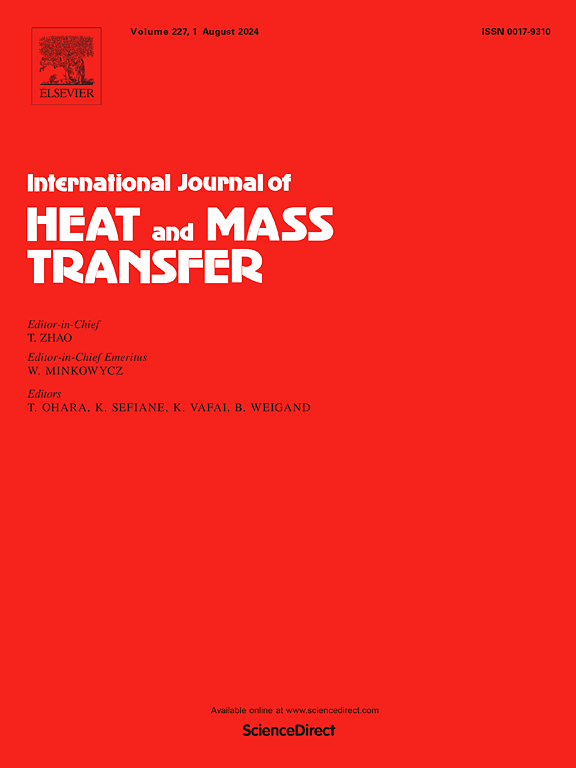垂直管热入口区反流混合对流的流态和传热
IF 5
2区 工程技术
Q1 ENGINEERING, MECHANICAL
International Journal of Heat and Mass Transfer
Pub Date : 2025-07-04
DOI:10.1016/j.ijheatmasstransfer.2025.127451
引用次数: 0
摘要
本文研究了垂直管内紊流对流混合对流的热入口长度问题。采用v2-f湍流模型进行了reynolds -average Navier-Stokes (RANS)模拟,并将模拟结果与已有实验数据进行了比较。模拟结果揭示了入口区的几种流动结构和换热特性,这些结构和换热特性随强迫对流和自然对流的竞争强度而变化。根据流动结构对流型进行分类:(a)非分离流型:当自然对流对流场影响最小时,入口区努塞尔数高于完全发达区。随着自然对流影响的增强,入口长度减小。(b)分离泡状态:随着自然对流对流场影响的增大,入口区沿加热壁面的速度边界层发生分离,形成一个称为分离泡的再循环区。在这里,由于分离气泡使热边界层增厚,努塞尔数分布下降。(c)逆流状态:自然对流影响的进一步加强导致沿整个加热壁面形成逆流。在这里,努塞尔数在入口区表现出近乎平坦的分布,这是因为逆流动使热边界层变厚。基于RANS仿真结果,建立并提出了流态图。本文章由计算机程序翻译,如有差异,请以英文原文为准。
Flow regimes and heat transfer for opposing flow mixed convection in the thermal entry region of a vertical tube
This study focused on the thermal entry length problem for turbulent opposing flow mixed convection in a vertical tube. A Reynolds-averaged Navier–Stokes (RANS) simulation was performed using the v2–f turbulence model, and its results were compared with previous experimental data. The simulation results revealed several flow structures and heat transfer characteristics in the entry region, which varied depending on the competing strength of forced and natural convection. Flow regimes were classified based on their flow structures as follows: (a) Non-separating flow regime: When natural convection minimally influences the flow field, the Nusselt number in the entry region is higher than that in the fully developed region. As the influence of natural convection strengthens, the entry length decreases. (b) Separation bubble regime: As the influence of natural convection on the flow field increases, the velocity boundary layer along the heated wall in the entry region separates, leading to the formation of a recirculation region known as a separation bubble. Here, the depression in the Nusselt number distribution was observed owing to the thickening of the thermal boundary layer caused by the separation bubble. (c) Reverse flow regime: Further strengthening of the influence of natural convection leads to the formation of reverse flow along the entire heated wall. Here, the Nusselt number exhibits a nearly flat distribution in the entry region because the reverse flow thickens the thermal boundary layer. A flow regime map based on the results of the RANS simulation was created and proposed in this paper.
求助全文
通过发布文献求助,成功后即可免费获取论文全文。
去求助
来源期刊
CiteScore
10.30
自引率
13.50%
发文量
1319
审稿时长
41 days
期刊介绍:
International Journal of Heat and Mass Transfer is the vehicle for the exchange of basic ideas in heat and mass transfer between research workers and engineers throughout the world. It focuses on both analytical and experimental research, with an emphasis on contributions which increase the basic understanding of transfer processes and their application to engineering problems.
Topics include:
-New methods of measuring and/or correlating transport-property data
-Energy engineering
-Environmental applications of heat and/or mass transfer

 求助内容:
求助内容: 应助结果提醒方式:
应助结果提醒方式:


